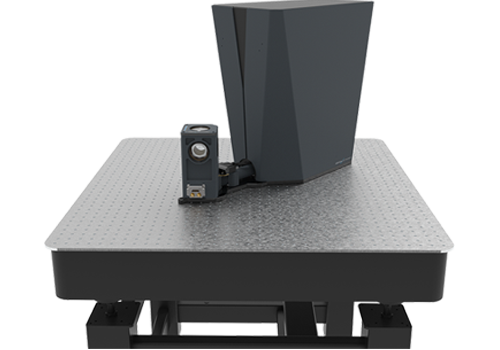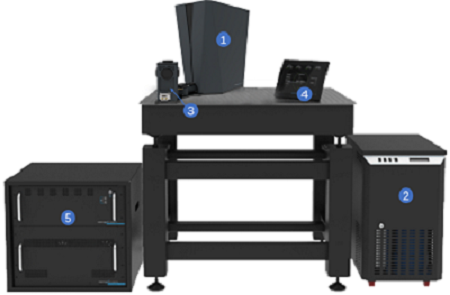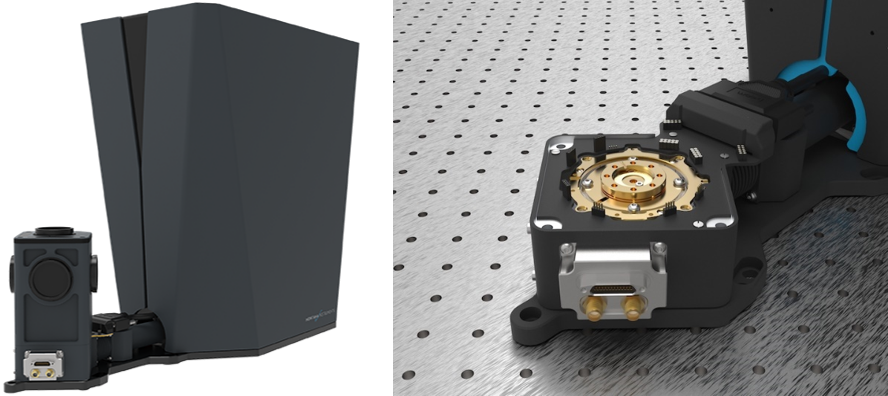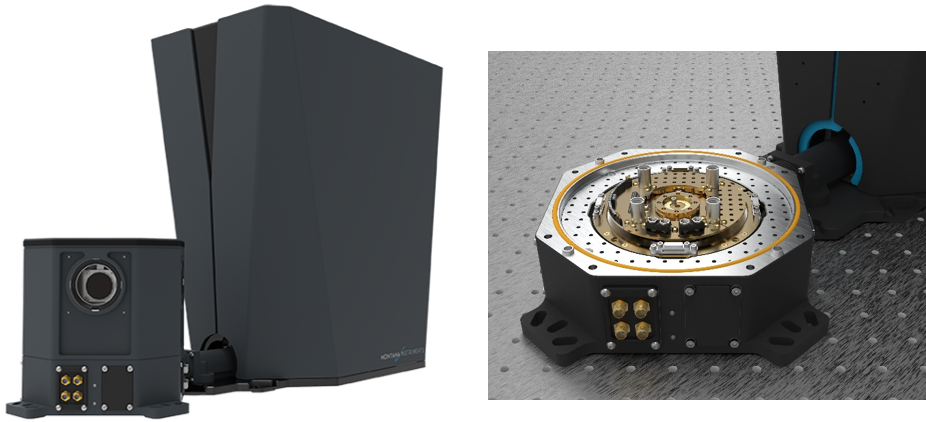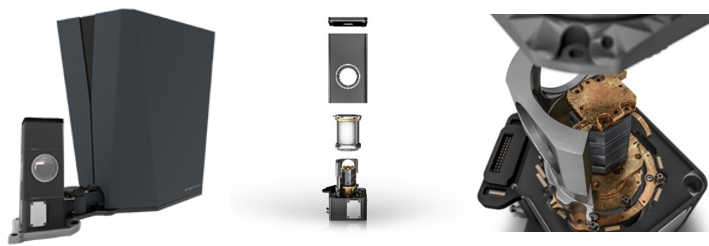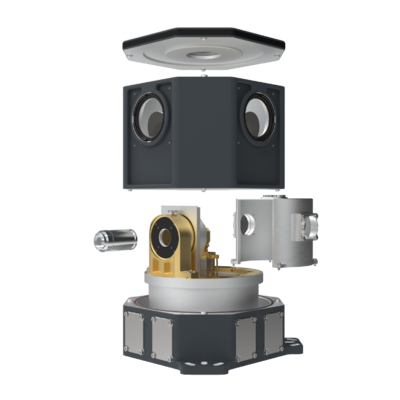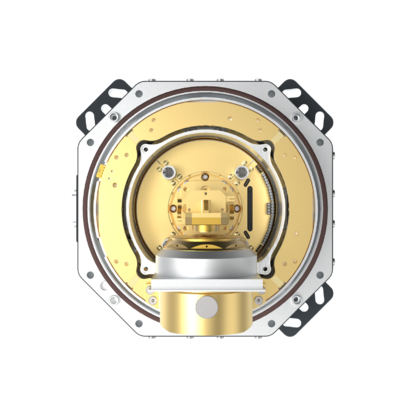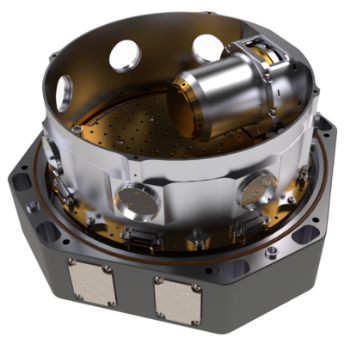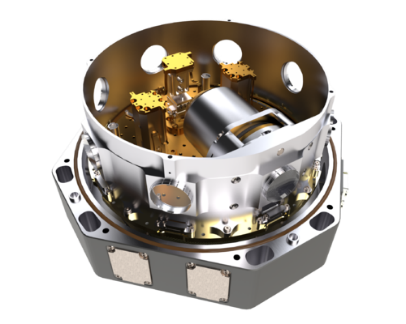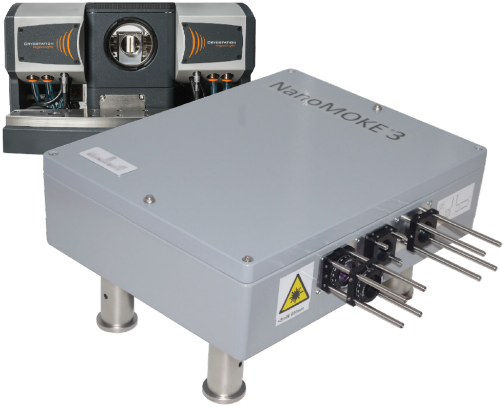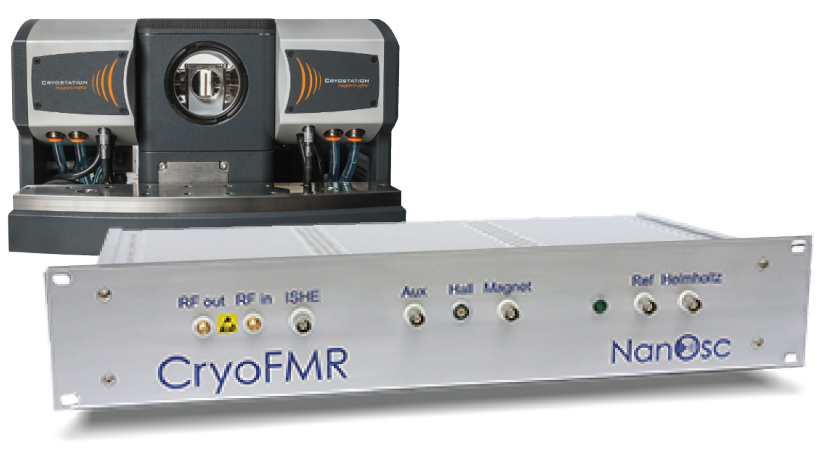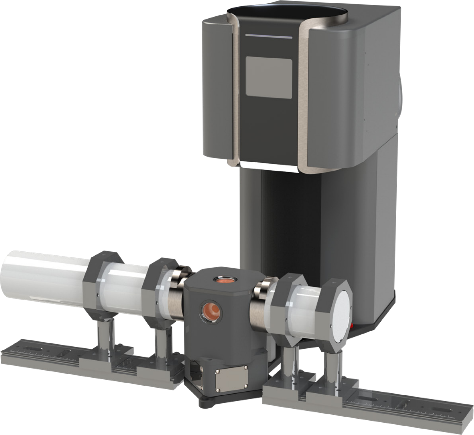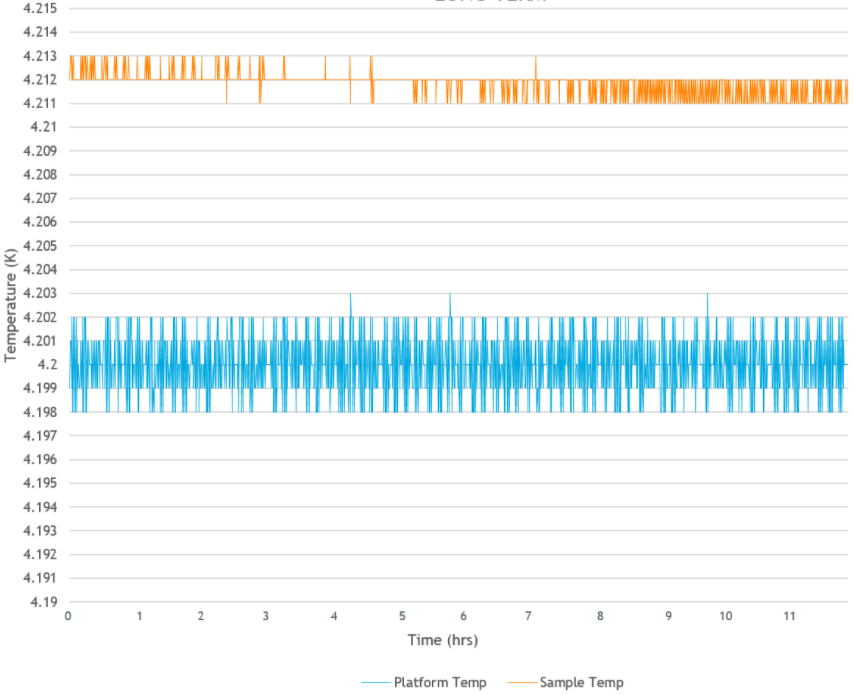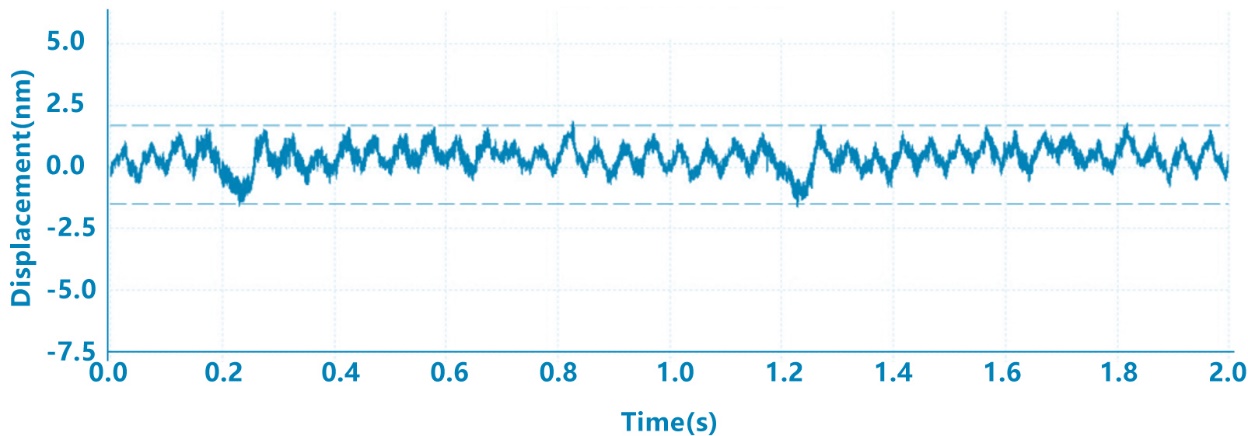■ 莫尔晶格与激子相互作用研究
在现代科学技术中,控制微腔中物质与光的相互作用关重要。这在强耦合机制中得到了体现,强耦合机制中形成的物质-光混合模式其性质可以由光波长光子控制。相比之下,纳米尺度的物质激发更难获得。在二维范德华异质结构中,可能会形成可调莫尔晶格电势并产生电子激发,从而能够在晶格电势中生成相关的电子气。也有报道将激子限制在莫尔晶格中,但未观察到明显的协同作用。2021年3月3日,密歇根大学Deng Hui团队在Nature发表题为”Van der Waals heterostructure polaritons with moiré-induced nonlinearity“的研究论文,该研究通过将MoSe2-WS2异质节集成到微腔中,建立了莫尔-晶格激子和微腔光子之间的协同耦合,耦合温度范围直液氮温度,从而将物质和光的多功能控制集成到一个平台中。这种莫尔极化子系统结合了强非线性、微腔和远距离光相干对物质激发的微观尺度调谐,从而为研究可调谐量子发射器阵列中的集体现象提供了一个平台。该研究中变温的光学测量采用了Montana Instruments生产的超精细多功能无液氦低温光学系统。
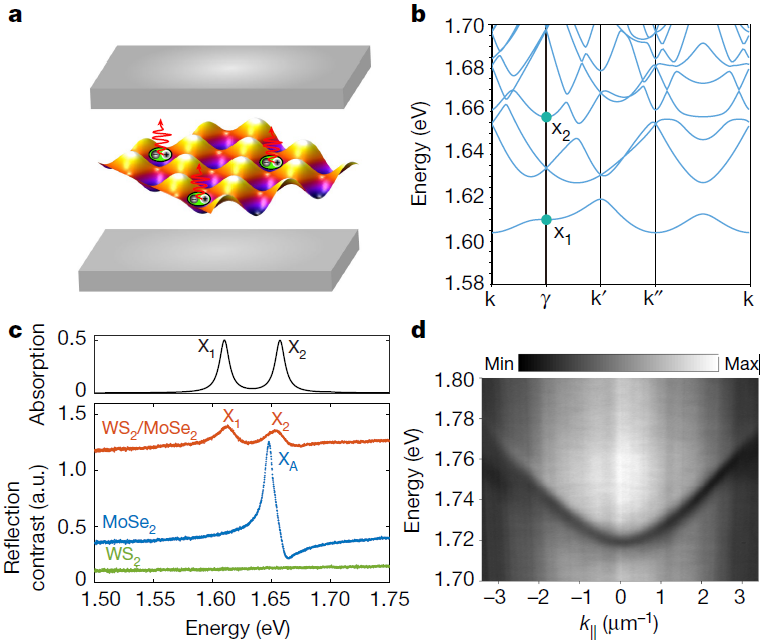
莫尔激子和微腔组成的莫尔极化激子系统,变温的光学测量采用Montana恒温器实现
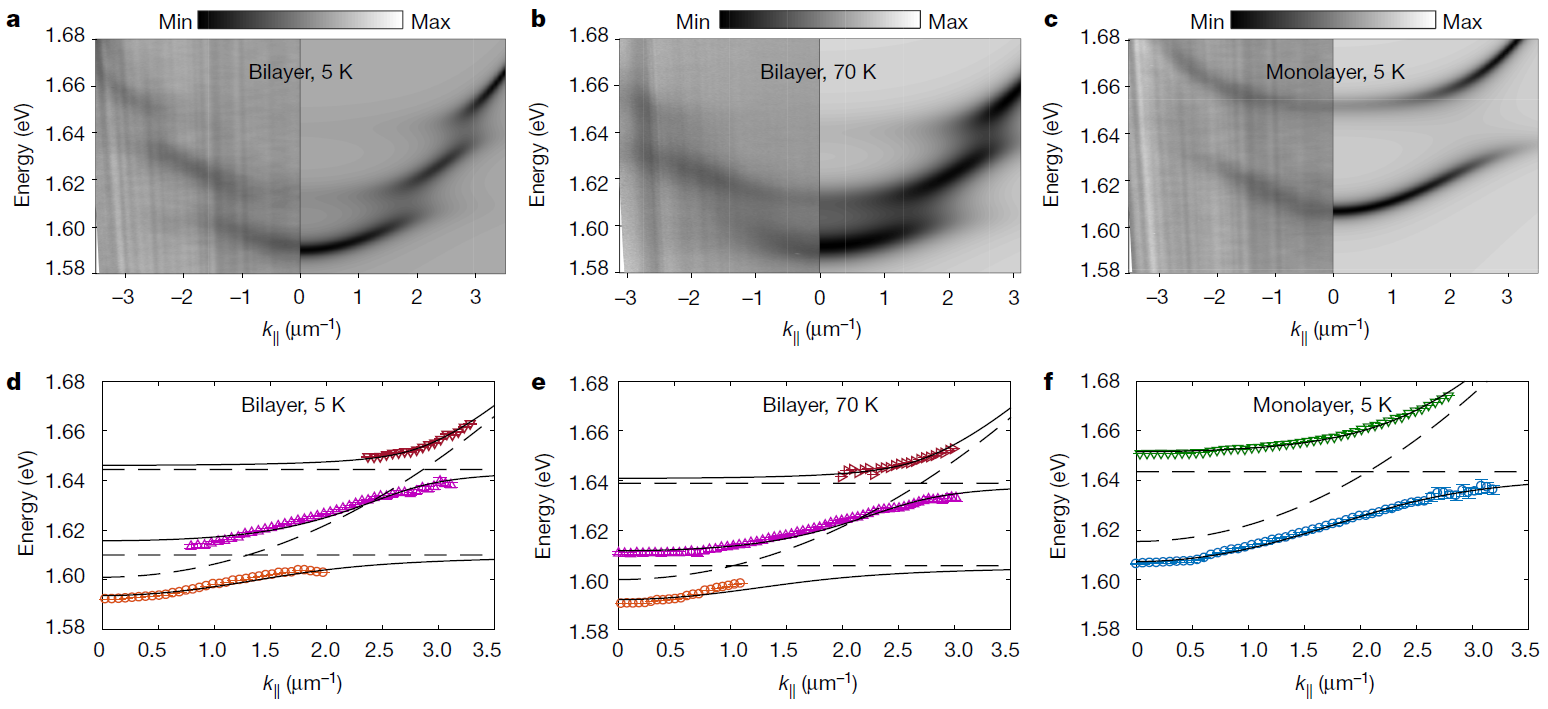
WS2–MoSe2中莫尔和ML极化激元的强耦合和分散,变温的光学测量采用Montana低温系统实现
■ 金属-绝缘体相变中由场触发的横向势垒研究
对金属-绝缘体相变材料施加电刺激可引起较大的电阻变化。从绝缘到金属相的电阻性转换,通常是通过形成平行于电流的导电丝来实现的,这是一个非常活跃的研究课题。
近期,加利福尼亚大学圣地亚哥分校物理科学与先进科学中心的Pavel Salev,Ivan K. Schuller等利用无液氦低温磁光克尔效应系统-CryoMOKE研究了基于LSMO薄膜器件中金属-绝缘体转变电触发的易失性电阻开关。在该研究工作中,作者利用磁光克尔成像发现从金属到绝缘体的电阻开关,在这一转变中存在一个反向的模式,形成了一个垂直于驱动电流的绝缘势垒。这个势垒的形成导致了一个不寻常的n型负微分电阻的伏安特性。作者进一步研究表明,电诱导横向势垒是一种可实现电压控制磁性的独特方法。通过触发磁性材料中的金属-绝缘体电阻性开关,可利用施加于整个器件的全局电压偏置实现局部磁性的开/关控制。该研究工作以《Transverse barrier formation by electrical triggering of a metal-to-insulator transition》为题发表在Nature Communications.

上图:金属-绝缘体电阻开关的磁光成像。100K低温下MOKE测量采用了Montana低温光学系统的磁体模块与NanoMOKE3系统。
■ 三角晶格反铁磁性材料Fe1/3NbS2中的三态向列性
将反铁磁体(AFMs)应用于自旋电子学是近年来材料学研究的重点课题之一,它有望获得更快响应、更低阈值电流和更小尺寸的新型低能耗电子器件。
加州大学物理系的Joseph Orenstein团队采用空间分辨光学偏振测量技术对Fe1/3NbS2晶体进行变温测量,在反铁磁奈尔温度以下发现晶体中出现了三态向列性畴。作者通过光热泵浦测量了向列性畴对温度的敏感性。这一发现说明反铁磁材料在类液晶方面具有一定的应用前景,对于新型材料的开发具有重要意义。
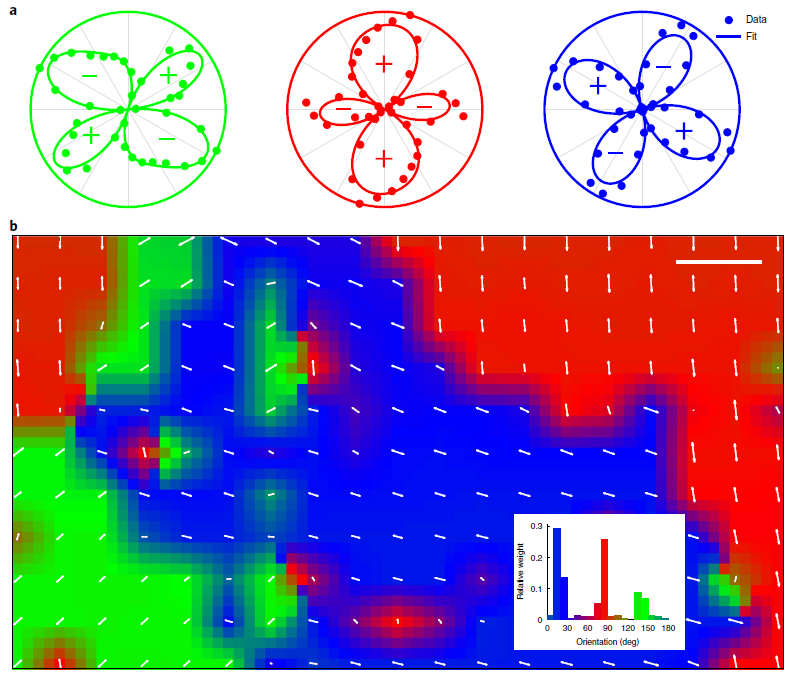
热调制偏振旋转测量的极坐标图与双折射图。a, 样品不同区域的δϕ表示样品旋转对称性的破缺;b, 500 μm*900 μm 区域的双折射图,显示了三个不同的向列性畴,其光学轴彼此夹角为120度[1]
从实验角度来讲,进行空间分辨的高精度变温光学偏振测量对于低温设备要求较为苛刻。首先,低温设备应具有超低震动和超高的位置稳定性;其次,设备应具有较近的工作距离,以方便进行高数值孔径测量。在本篇文章中作者强调实验采用了Montana Instruments生产的光学系统,系统配备了近工作距离窗口。利用此光学系统,作者非常方便的搭建了室温物镜的光学测量系统,得到了数据质量很好的实验结果。
参考文献:
[1]Arielle Little et al, Three-state nematicity in the triangular lattice antiferromagnet Fe1/3NbS2, Nature Materials 19, 1062–1067 (2020)
■ 同位素碳化硅中单个核自旋的纠缠和控制
固态材料中的核自旋既是消相干的原因也是自旋比特的来源。在这项工作中,芝加哥大学David D. Awschalom通过在碳化硅(SiC)中控制单个的29Si核自旋,在一个具有光学活性的空位自旋和强耦合的核寄存器之间创造了一个纠缠态。此外,作者还展示了如何利用SiC的同位素加工来实现弱耦合核自旋的控制,并提出了一种性原理计算方法来预测优同位素分数,使可用核存储器的数量大化。总的来说,作者展示了在固态系统中控制核环境的重要性,实现了工业级尺度材料中的单光子发射器与核寄存器的连接。
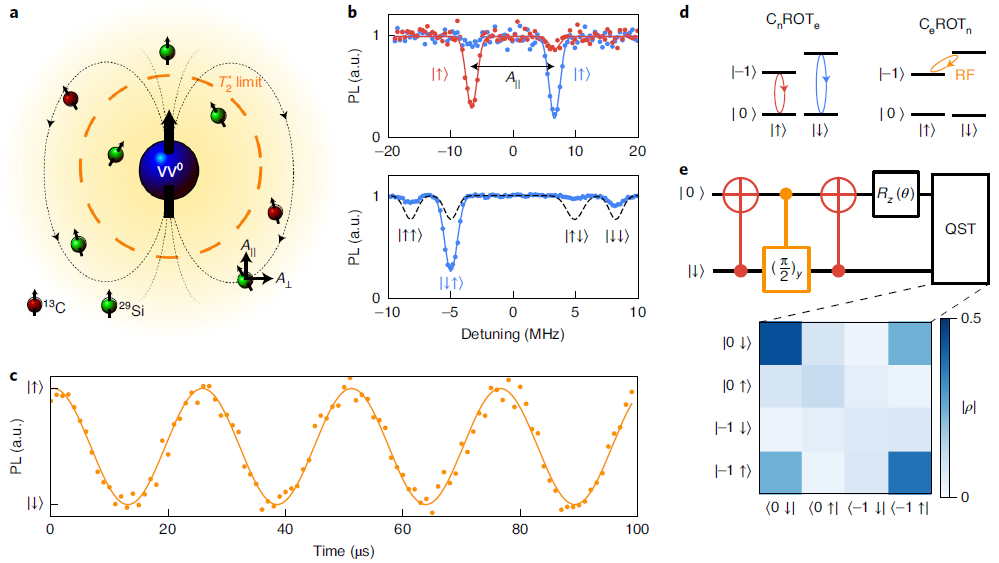
初始化、控制和纠缠强耦合核自旋,详细内容请参考原文[2]
该工作中对于单光子的观测,作者使用了Montana Instruments生产的S100型光学恒温器。实验中采用了数值孔径0.85的物镜与单模光纤耦合的超导纳米线单光子探测器。S100系统较大的样品空间为该实验提供了稳定的低温环境。S100型光学恒温器是为中等尺寸低温环境需求而专门设计的型号,相对于S50型恒温器可以容纳更多的光学组件和装置,可以实现较为复杂的光学实验方案。
参考文献:
[2]. Alexandre Bourassa et al, Entanglement and control of single nuclear spins in isotopically engineered silicon carbide, Nature Materials 19, 1319–1325(2020)
■ 扭曲WSe2/WSe2双层膜中电调控自旋谷动力学
不同于传统材料,范德华异质结材料中的扭转自由度为电学和光学性质的研究提供了一个新的工具。哈佛大学物理系的Mikhail D. Lukin与Hongkun Park团队证明了在过渡金属二硫系化合物双层膜中扭转两层材料的角度可以改变两层中自旋谷的动量排列,从而实现对自旋谷特性的控制。具体来说,在扭曲WSe2/WSe2双层膜中作者观察到层间激子在零电场和磁场下表现出高度的圆偏振(DOCP>60%)和较长的谷寿命(>40 ns)。并且通过静电掺杂可以对谷寿命实现超过3个数量级的调控,也可实现DOCP从n掺杂状态的80%到p掺杂状态的5%的调节。这些结果为可调手性光-物质相互作用开辟了新的途径,使利用谷自由度制造新器件方案成为可能。
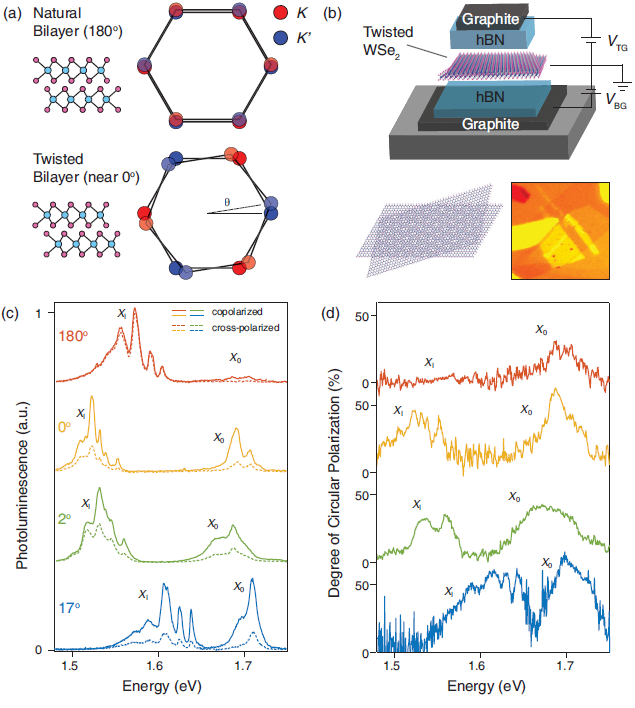
通过扭曲来改变能带结构a,布里渊区对齐和扭曲的侧视图;b,装置的示意图和光学图片;c,不同扭转角度样品偏振PL光谱图,X1为层间激发,X0为层内激发;d,由c图计算得到的PL光谱偏振角度[3]。
本工作中研究人员基于Montana光学恒温器使用0.75数值孔径的物镜搭建了共聚焦显微镜系统,并使用该系统完成了高精度的光学测量。Montana恒温器具有非常好的开放性和兼容性,研究人员几乎可以忽略恒温器对实验的影响,可以直接将室温的实验方案平移到低温环境中。
参考文献:
[3]. Giovanni Scuri et al, Electrically Tunable Valley Dynamics in Twisted WSe2/WSe2 Bilayers, Physical Review Letters, 124, 217403 (2020)
■ 无褶皱超平石墨烯的变温拉曼测量

南京大学高力波教授、奚啸翔教授等多个课题组合作,采用质子辅助的CVD方法生长制备出了无褶皱的超平石墨烯。该方法成功解决了传统CVD制备石墨烯过程中由于石墨烯与基质材料强耦合作用而形成的褶皱,这为石墨烯在二维电子器件等领域的应用扫除了一大障碍。文章表明,在质子辅助的CVD制备方法中,质子能够渗透石墨烯,对石墨烯和衬底之间的范德瓦尔斯相互作用进行去耦合,使褶皱完全消失。该方法还可以对传统CVD制备过程中产生的褶皱进行很大程度的去除。此外,通过新方法制备的超平石墨烯材料,不仅具有优异的清洁能力,还在测量中展示了室温量子霍尔效应。研究认为,质子辅助的CVD方法不仅能制备出高质量的石墨烯,并且对制备其他种类的纳米材料具有普适性,为制备高质量的二维材料提供了一种新途径。相关成果发表在Nature。
值得一提的是,文章中对样品进行了高质量的变温Raman测量(南京大学物理学院奚啸翔教授通过Montana Instruments公司生产的Cryostation®系列高性能恒温器与普林斯顿光谱仪联合测量完成。高质量的数据表明了基于Cryostation系列恒温器的变温拉曼具有非常优异且稳定的性能。),清晰的展示了不同制备与处理条件的石墨烯G峰和2D峰随温度变化的峰位移动。揭示了石墨烯与衬底之间相互作用的强弱以及石墨烯受到的应力大小。
目前由Montana Instruments公司与Princeton Instruments联合开发的超精细变温显微拉曼系统——microReveal RAMAN已经正式向全球销售。该集成式系统实现了变温拉曼的优化测量,省去了自己搭建变温拉曼的繁琐过程。该系统根据不同的应用可以实现4K-350K(500K可选)大温区范围内的拉曼光谱与成像、荧光光谱与成像、吸收光谱、电学测量和光电输运测量等多种功能。
参考文献:
[1] Yuan, G., Lin, D., Wang, Y. et al. Proton-assisted growth of ultra-flat graphene films. Nature 577, 204–208 (2020)
■ 金刚石NV色心研究
金刚石NV色心(Nitrogen-vacancy defect centers) 近年来在科研界被高度关注。NV色心独特且稳定的光学特性使其拥有广泛的应用前景。在量子信息领域,NV色心可以作为单光子源用于量子计算。NV色心作为具有量子敏感度的传感设备,还可应用于纳米尺度磁场、电场、温度、压力的探测。在生物学领域,NV色心是的生物标识物,具有光学性能稳定,细胞毒性低的特点。
Montana Instruments开发的低温恒温器专门针对NV色心领域研究需要而进行优化,扫除了科研人员进入NV色心研究领域的障碍。以下是低温(4K)NV色心研究的实验方案举例。
1. 总体NV色心信号收集实验
将磁性样品覆盖在表面具有较多的NV色心的块体金刚石衬底上。这个NV色心表面层通常由离子注入或在金刚石表面合成富氮表面层来实现。通常采用532nm的激光激发NV色心到激发态,并在630-800nm波长范围收集荧光信号。同时利用微波信号激发和探测NV色心的自旋态(ESR)。荧光信号由二维的CCD探测阵列收集成像并与样品相对应。与单个NV色心的研究不同,该实验方案采用大工作距离获得大视野范围的成像,从而实现大面积信号的采集。

CCD与显微镜成像
2. 单个NV色心研究:样品表面的纳米金刚石
纳米金刚石的单个NV色心探测可以通过共聚焦显微技术来实现。实验装置包括三维低温纳米位移台,Z方向可以精准调整样品到焦平面,XY可以对样品表面进行扫描。Montana Instruments设计方案可以采用高数值孔径物镜对4K的样品中的单个NV色心进行测量。系统的收集效率高、光斑直径小,轻松聚焦单个NV色心。采用532nm激光激发,对630nm-800nm范围的荧光信号进行采集。采用可调的微波信号对NV色心的自旋态进行激发,通过荧光信号的峰值位移来确定其自旋态。为了研究感兴趣的区域,通常将金刚石粉末(20-30nm)均匀的撒在样品表面,然后使用三维纳米位移台来扫描样品并且对特定NV色心进行测量。并且可以通过单个NV色心实现在较大温度范围内对样品的性质进行观测。
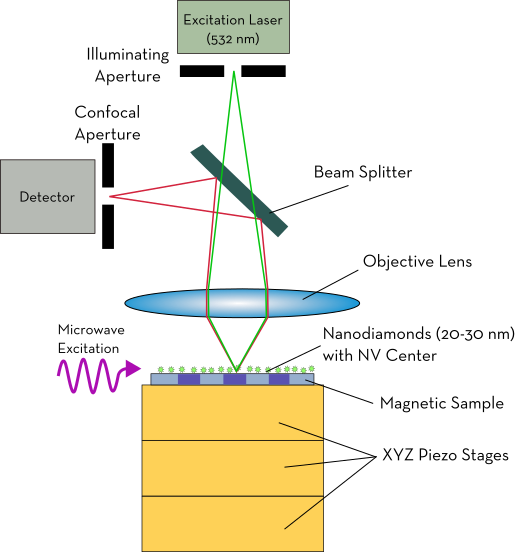
扫描共聚焦显微镜
Tokura课题组成功的运用此技术研究了FeGe样品中的磁涡旋结构。实验细节请参考:
Using NV-Center Optically Detected Magnetic Resonance (ODMR) as a Probe for Local Magnetic Dynamics in Transition Metals
3. 扫描探针量子探测器(例如,扫描磁力显微镜)
我们将一个NV色心固定在扫描探针显微镜的探针末端。可以通过在针尖上“粘贴”纳米金刚石,或采用纳米压印与O2刻蚀技术将块体金刚石加工成前沿再用N-14注入来实现NV色心,现在甚已经有商业化的针尖。采用共聚焦显微镜将激发光聚焦在扫描探针的NV色心上。样品可以通过低温纳米位移台进行精确扫描。这样便实现了对样品表面的纳米级精度大范围成像测量。该技术理论上可以对多种与NV色心荧光相关的特性进行高精度显微学测量。
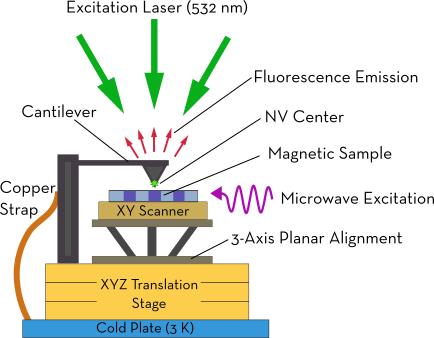
扫描探针显微镜
Jayich课题组 (UCSB)运用这一技术在BaFe2(As0.7P0.3)2 超导材料的转变温度附近(30K)成功观测到了vortices。这一技术在研究材料低温下的新奇性质方面前景广阔。更多细节请参考:
Scanned probe imaging of nanoscale magnetism at cryogenic temperatures with a single-spin quantum sensor.
■ 高性能低温恒温器在量子计算中的应用
Cryostation®低温恒温器系统可为量子计算相关研究提供多种解决方案,丰富的可选配置与配件可以满足各种实验的需求,诸如离子阱、超导环、NV色心的高数值孔径荧光观测等。根据具体实验需求Montana Instruments可以提供适合的配置方案。
量子计算实验案例:RF离子阱
配置方案:高数值孔径荧光读出、多光学通道用于激光制冷、RF+DC电学通道用于制造囚禁势阱。
作为该实验方案的核心,离子阱量子计算包括N个囚禁离子。离子可以被囚禁在泡利(RF)阱或彭宁(磁场)阱中,每个囚禁离子具有两个态或亚稳态。这里我们简单讨论泡利阱的情况,实验上泡利阱是通过在样品上印制一组具有特殊几何形状的RF电极产生限制电势实现的。在设计好势阱后我们通过激光烧蚀衬底产生一个待囚禁的离子(常用137Yb+),采用多普勒或Sisyphus冷却方案用激光将高度激发状态的离子冷却量子态。后再将离子导入精心设计的势阱中。
待离子进入势阱中,将他们在空间上隔开几微米的距离,每个离子代表一个量子比特。量子比特通过库伦相互作用影响量子比特的集体震荡来实现耦合。每一个量子比特都通过与库伦势的“平行”或“反平行”将自己的局部态编码进集体震动。这样每一个在一维链上的量子比特都实现了与其他每个量子比特的耦合。
量子计算的通用“门”操作(CROT, SWAP以及内部量子比特态的任意翻转)可以通过对量子比特光激发来实现。对于137YB+离子链,佳波长为355nm。激光源的稳定性尤为重要,激发频率与电子的共振频率要精确匹配(10KHz或更好),以防止其他临近态的激发。紫外激光由于具有合适的波长与的频率稳定性常被用于半导体材料的维纳加工,现在也成为量子计算的上佳选择。
量子比特在经过一系列量子算法的门操作后的量子态可以被读出。囚禁离子的量子态读出是通过测量与量子态相关的荧光实现的。目前的研究通常利用高数值孔径的显微镜可以实现10%左右的收集效率。未来的量子计算可能会通过集成光学微腔的方案来提高荧光光子的收集效率,预计可以大于50%。该集成技术也可以推动可拓展与重构的量子计算电路发展。
总的来说,设计和操纵一个可靠的离子阱量子计算机需要1、稳定的激光源与精准的频率控制。2、有效且控制良好的RF电势来定位与控制囚禁离子。3、数字控制的空间分辨率很高的脉冲激光来制备、测量、操纵量子比特。4、量子态的可靠探测与读出。
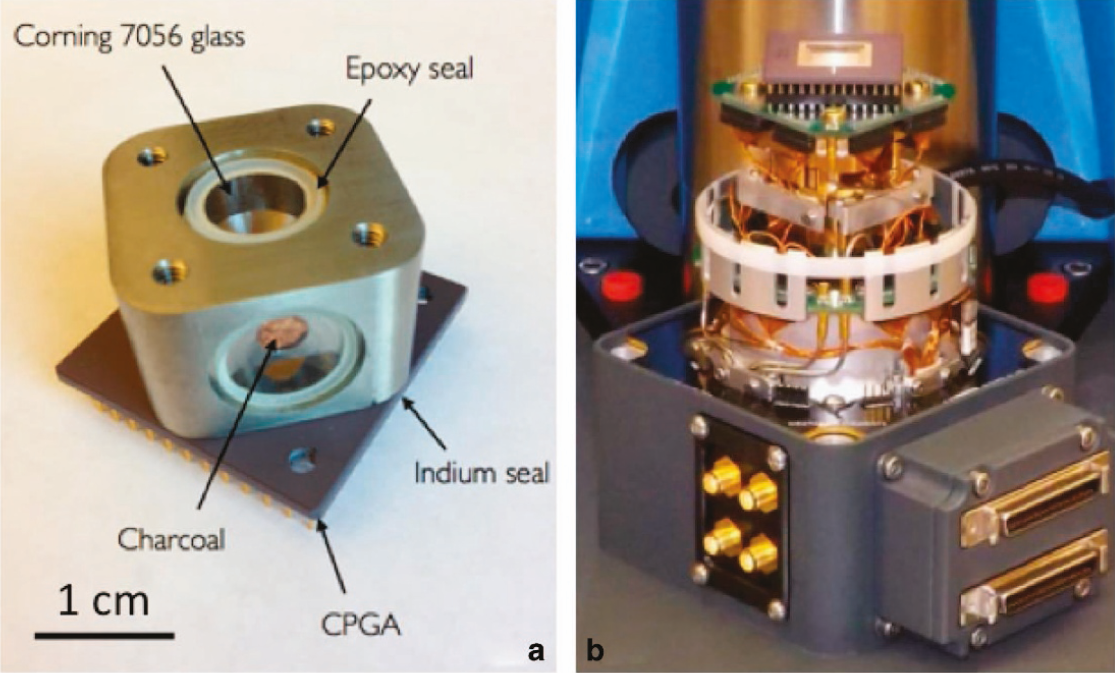
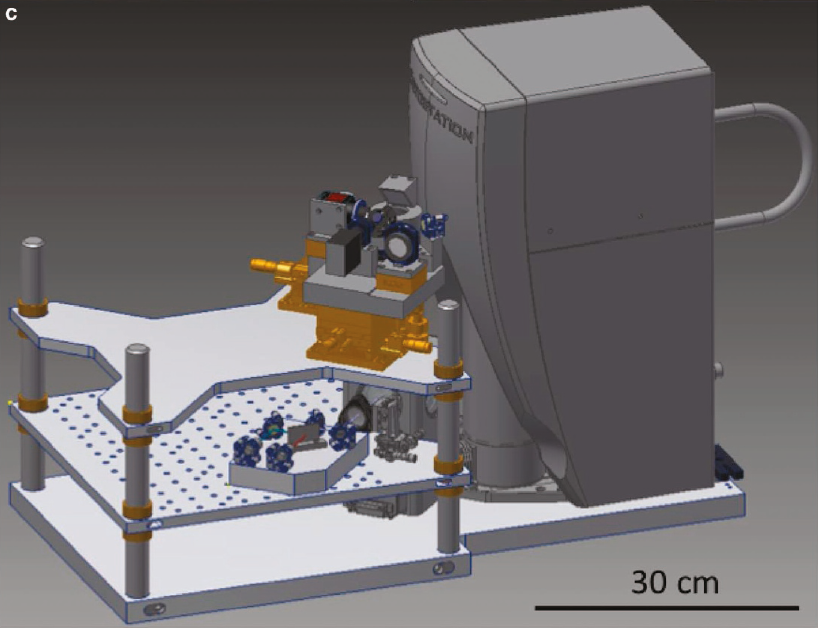
Montana Instruments与科研人员共同设计的离子阱量子计算机

MI恒温器与集成式单光子探测器有望提高离子阱的量子态读出
参考文献:
[1] ohnson, K. G. et al. Active Stabilization of Ion Trap Radiofrequency Potentials. Review of Scientific Instruments 87, 53110 (2016).
[2] Brown, K. R., Kim, J. & Monroe, C. Co-Designing a Scalable Quantum Computer with Trapped Atomic Ions. npj Quantum Information 16034 (2016).
[3] Debnath, S. et al. Demonstration of a small programmable quantum computer with atomic qubits. Nature 536, 63–66 (2016).
[4] Steane, A. M. The Ion Trap Quantum Information Processor. Applied Physics B: Lasers and Optics 64, 623–643 (1997).
[5] Faraz Najafi et al. On-chip detection of non-classical light by scalable integration of single-photon detectors. Nat. commun,6:5873, 2015
■ 高性能低温恒温器在自旋电子学中的应用
科研中MOKE常用来表征材料的电子和磁学特征,例如磁畴结构、自旋态密度、磁相变动力学。在高质量纳米结构和2D材料中新的实验进展表明,有望在集成的光子或自旋电子器件中利用磁光效应在纳米尺度上加强对光的控制。
MOKE实验需要灵活的光路与电学通道以及磁场环境。样品需要一个超稳定的低温环境并且能够调整配置以适应实验需求的多种几何光路。Cryostation基础系统与成熟的选件库可为MOKE提供多种解决方案。通过不同的搭配组合我们可以轻松实现磁光克尔效应、光磁测量、光致发光、偏振分辨测量、自旋输运与动力学、磁畴壁移动、磁阻研究、电学和高频测量、输运性质等方面的研究。以下是部分低温磁光克尔效应实验举例:
1. 纵向磁光克尔效应
在纵向MOKE的几何光路中,磁场与样品表面平行,样品中的磁畴平行于磁场方向。激光光源通过偏振器实现设定的偏振。光线通过物镜聚焦在样品感兴趣的区域上。入射光线与样品的磁畴发生相互作用使得反射光线偏振方向改变。偏振方向改变的幅度与局部磁化的强度成比例。通过仪器接收并分析反射光线的克尔转角就可以得到局部磁矩的方向和强度信息。这种测量方案所需的样品环境可以在集成了双极性电磁铁的低温恒温器中来实现,例如Cryostation与Magneto-Optic。
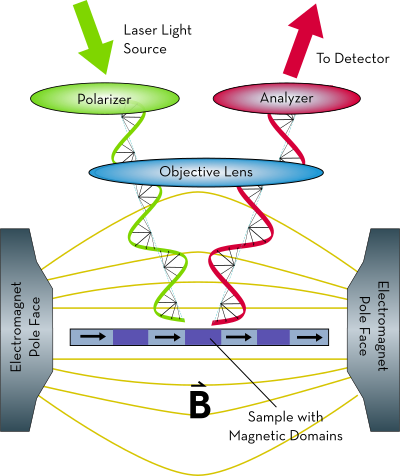
利用纵向克尔效应的宏观磁畴图像测量方案
2. 极向磁光克尔效应
在极向克尔几何光路中,磁场沿样品表面的发现方向(适用于面外易磁化轴样品)。此时磁化方向垂直于样品表面,为了大化的收集信号,入射激光需要垂直照射在样品表面。与纵向克尔类似,入射激光的偏振方向在被磁性样品表面反射时会发生轻微的偏转。偏转的程度与局部磁畴的强度和方向有关。在Cryostation与Magneto-Optic装置中,与纵向克尔相比,样品旋转了90°,并且在磁极中间引入了一个小的反射镜来实现入射光线与磁场的平行以及与样品表面的垂直。

极向MOKE宏观磁畴测量方案
3. 时间分辨MOKE
可以用时间分辨(瞬态)的MOKE对脉冲磁场和脉冲电场驱动的磁畴壁移动进行动力学研究。举例来说,可以对用于磁带存储器研究的磁性纳米线中的磁畴壁移动进行测量。磁畴壁通常在预定的位置有电脉冲或磁脉冲注入纳米线。利用MOKE信号对纳米线的局部进行探测,空间分辨率可优于1um,时间分辨率可达到150fs。如果t=0时刻对应于畴壁注入,对指定区域沿纳米线进行延时脉冲扫描观察MOKE信号的变化。MOKE信号的变化对应磁畴壁移动所引起的磁性翻转。通过测量纳米线不同位置MOKE信号的变化时间可以计算出畴壁的移动速度。
时间分辨MOKE也可以用于研究自旋“群体”的寿命。利用极化的泵浦光对感兴趣的材料进行自旋激发。利用探测光进行延时扫描,MOKE信号的强弱可以计算自旋“群体”密度。自旋的“寿命”可以通过观测自旋“群体”的密度来计算。Kawakami课题组(Ohio State University)利用该方法对过渡族金属二硫化物WS2在低温(<6K)下进行了时间分辨克尔转角测量(TRKR)。对比TRKR信号与显微荧光,研究者发现强激子发光与高自旋密度之间的一种意料之外的反相关关系。这一发现为短时激子自旋角动量到长时导电电子自旋态转化提供了新的见解。
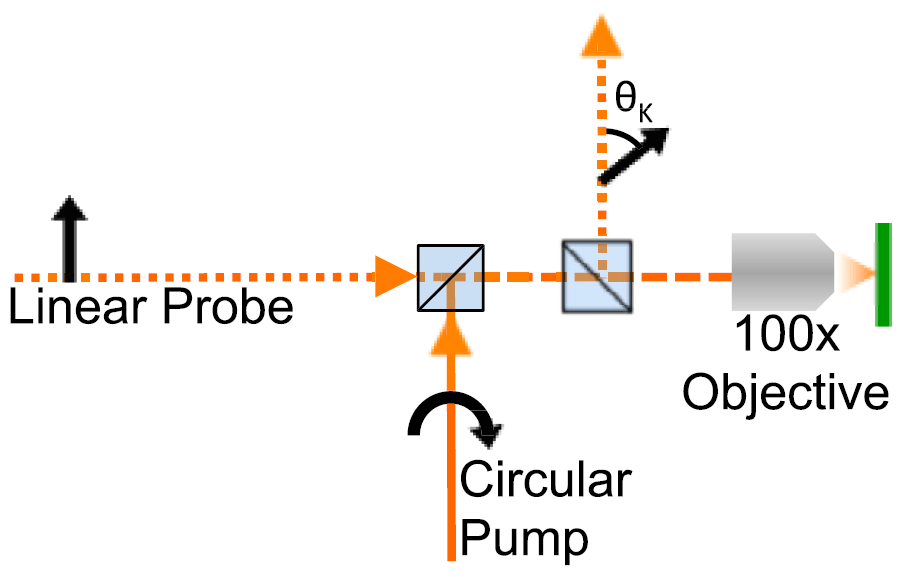
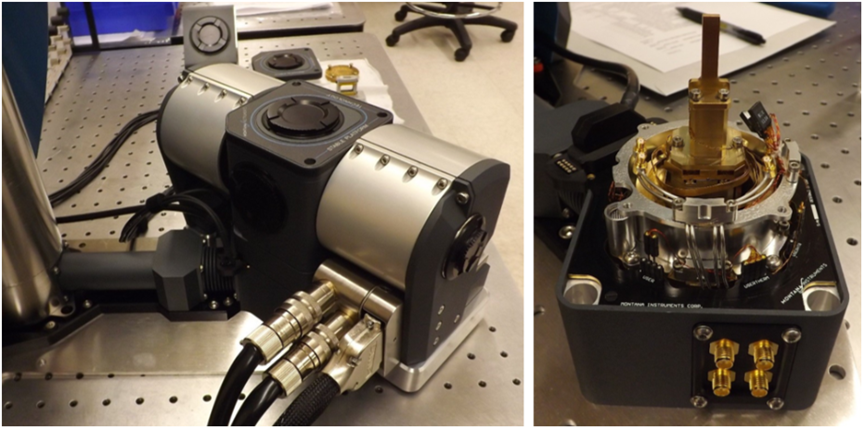
时间分辨克尔效应的原理与装置图
4. 强磁场(>1T)MOKE
华盛顿大学的Xu和Cobden 利用7T的超导磁体与低温设备,采用法拉第几何光路测量磁场对光致发光极化的影响对单层WSe2进行了研究。更多信息请阅读:Magnetic Control of Valley Pseudospin: A Story of Symmetry.
参考文献:
[1] Durham Magneto Optics Ltd & Beguivin, A. Characterization of the Montana Instruments Cryostation C2 for low temperature Magneto-Optical Kerr Effect measurements using the NanoMOKE 3.
[2] Bushong, E. J. et al. Imaging Spin Dynamics in Monolayer WS2 by Time-Resolved Kerr Rotation Microscopy. arXiv:1602.03568 [cond-mat] (2016).
[3] Aivazian, G. et al. Magnetic Control of Valley Pseudospin in Monolayer WSe2. Nature Physics 11, 148–152 (2015).
[4] Henn, T. et al. Ultrafast supercontinuum fiber-laser based pump-probe scanning MOKE microscope for the investigation of electron spin dynamics in semiconductors at cryogenic temperatures with picosecond time and micrometer spatial resolution. Review of Scientific Instruments 84, 123903 (2013).
更多应用案例,请您致电010-85120277/78/79/80 或 写信 info@qd-china.com 获取。



